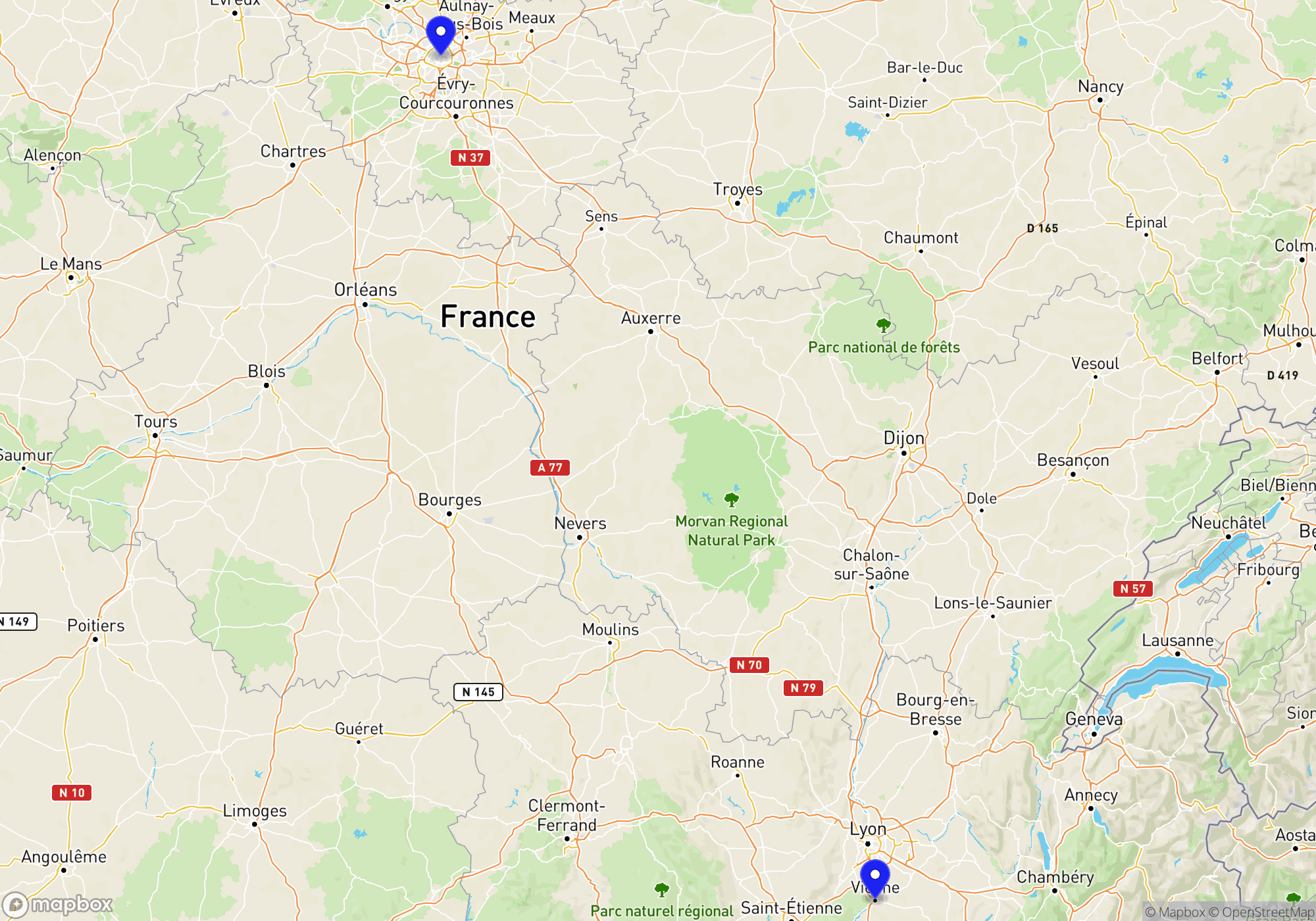
You can buy train tickets directly from the operator or through a reseller. The reseller is typically slightly more expensive (3-5%) but can provide an easier booking experience, especially if you travel with more than one operator.


These operators provide a complete journey either as a direct connection or through their partners. Even if a change of trains is involved, it’s all part of a single itinerary managed by the same train company or its partners, offering a smoother and more coordinated travel experience.


Some operators don’t run direct trains the whole way, but they serve either the departure or arrival station. In many cases, you can combine two of these operators to complete your journey by changing trains along the way. This is often a flexible and budget-friendly way to travel — especially if you’re comfortable piecing together your own itinerary.
Just keep in mind that these are separate journeys, which means a delay on the first leg could cause you to miss the second without automatic compensation or rebooking. It’s a great option for confident travelers who don’t mind a bit of extra planning.




SNCF, the French National Railway Company, is a well-established rail operator known for its efficient and extensive network across France and other parts of Europe. SNCF operates a variety of train types, including the high-speed TGV (Train à Grande Vitesse), which is known for its comfort and swiftness. These trains typically offer amenities such as spacious seating, catering services, Wi-Fi, and power outlets. Travelers can choose from different classes, with first-class passengers enjoying additional legroom and more personalized service. SNCF is known for its user-friendly online booking system and comprehensive customer support, including both in-person assistance at stations and various digital channels.
Flixbus, primarily known as a long-distance bus company, has expanded into the rail sector with FlixTrain. However, FlixTrain operates primarily in Germany and does not provide train service between Paris and Vienna. For those considering Flixbus, the service is more budget-friendly compared to traditional train services, offering basic amenities such as Wi-Fi and power outlets on buses. The booking process is straightforward and can be done online or through their app. Customer support is accessible through their website, email, and app, providing assistance in multiple languages. Although Flixbus primarily operates coach services, travelers often find it a cost-effective way to journey across Europe.
For traveling from Paris to Vienna by train, travelers might consider using SNCF for the segment to Munich or Stuttgart and then Opt for another operator like ÖBB (Austrian Federal Railways) for the onward journey to Vienna. This route often involves traveling on ÖBB’s Railjet trains, which offer excellent service and amenities such as dining cars, Wi-Fi, and comfortable seating across different classes.
The Interrail Global Pass is valid for travel by train from Paris to Vienna for residents of EU countries, as it covers international train journeys across multiple countries, including France and Austria. The Interrail One Country Pass is not valid for this journey since it covers travel within one selected country only and this route involves travel between two countries. The Eurail Pass is valid for travel from Paris to Vienna for non-EU residents, as it is designed for tourists from outside the EU to travel across European countries by train.
When arriving by train in Vienna, you will likely disembark at either Vienna Hauptbahnhof, Westbahnhof, or another central station. From there, Vienna offers a comprehensive and efficient public transportation system that makes getting around the city straightforward. The Vienna U-Bahn (metro) consists of five lines, U1 through U6, which cover the city extensively. The metro operates frequently, generally from around 5 AM until midnight on weekdays, with extended hours on weekends. Trams are another excellent option, with over 30 lines traversing the city, offering scenic views of the city’s architecture as you travel. Tram lines often run parallel to important streets and provide service from early morning to late evening. Buses complement these networks, covering areas not directly served by trams or the U-Bahn. Taxis are widely available and can be hailed on the street or booked via phone apps. While convenient, taxis are generally more expensive than public transport. For ridesharing, services like Uber operate in Vienna, offering an alternative to traditional taxis with typically competitive rates. Remember to purchase a ticket before using public transportation; options include single, 24-hour, 48-hour, and weekly tickets, purchasable at station vending machines or via a mobile app. Public transportation in Vienna is known for being reliable and safe, making it a convenient choice for exploring the city.
Vienna, as a central hub in Europe, offers numerous domestic and international rail connections. Domestically, travelers can easily reach major Austrian cities via ÖBB, the Austrian Federal Railways. The Westbahn runs frequent services to Salzburg, a journey that takes about 2.5 hours and is renowned for its efficiency and picturesque scenery. Innsbruck, located in the western part of Austria, is accessible via several daily services with a travel time of around 4.5 hours, offering connections through stunning alpine landscapes.
Internationally, Vienna is well-connected by train to various European cities. To the west, the Railjet service provides a direct link to Munich, Germany, taking approximately 4 hours. Train travelers heading east to Budapest, Hungary, can use the Railjet or EuroCity services for a journey that lasts about 2.5 to 3 hours. Prague, in the Czech Republic, is accessible by the EuroCity trains, with travel times of roughly 4 hours. Further connections include direct services to Poland’s capital, Warsaw, which generally take around 7 hours on the EuroCity trains. Additionally, routes to Italy, such as Vienna to Venice, are available via the Nightjet, offering an overnight service that accommodates comfortable travel. Overall, Vienna’s strategic position on the European railway network ensures comprehensive connectivity for both domestic and international travelers.
The best months to visit Vienna generally depend on your preference for weather and activities. Late spring, from April to June, is an ideal time to visit as the weather is mild, with temperatures ranging from 15°C to 25°C, and the city is in full bloom. During this period, you’ll also experience fewer tourists compared to the peak summer months, which can make your visit more pleasant and less crowded. Summer, particularly July and August, brings warm temperatures and lively atmospheres with an array of outdoor festivals and concerts, but this is also when prices and visitor numbers peak.
For a quieter and potentially less expensive experience, consider visiting in early fall, from September to October, when the weather is still comfortable, ranging from 10°C to 20°C, and most of the summer crowds have diminished. During this time, you can enjoy the beautiful autumn colors and partake in the wine harvest season, particularly at the local heurigers (wine taverns). Late November to December is popular for its enchanting Christmas markets. Although it tends to be colder, the festive atmosphere and seasonal activities create a magical ambiance. If budget is a bigger concern, visiting during the winter months of January and February might offer more affordable accommodation rates, but be prepared for colder weather and shorter daylight hours. However, Vienna’s cultural scene, including museums and classical music events, remains vibrant year-round, which is a significant draw for visitors regardless of the month. Arriving by train, you’ll find Vienna’s train station well-connected and efficient, making it easy to explore the city whenever you choose to visit.
When traveling by train from Paris to Vienna, it’s essential to pack your passport and any required visas, as these are necessary for crossing international borders. A comfortable travel pillow and a light blanket can enhance your journey. Noise-canceling headphones or earbuds will help maintain tranquility, especially for overnight travel. Bring a universal power adapter since Austria uses Type F plugs, which may differ from those in France. It’s also wise to carry a portable charger to keep your devices powered. Pack snacks and a reusable water bottle for the journey, as onboard catering might have limited options. Bring a city map or a pre-downloaded map app for Vienna and a guidebook for sightseeing ideas. Comfortable walking shoes are essential for exploring, and a lightweight rain jacket or umbrella is advisable for unpredictable weather. A small first-aid kit and any personal medications should be included for safety and convenience. Lastly, a notebook or journal can be helpful for documenting your trip.